Calling People "Fascist" Has Been Stupid for More than 100 Years Now
The “fascist” slur was invented to insult moderates instead of literal Nazis and is nothing more than childish name-calling.
After World War II, many of us seem to have an itch to call our political enemies “fascist.”
Those who scratch this itch are prone to protest, “Why not? Why is it out of bounds to use the word ‘fascist?’ Why can’t I say ______ is a ‘fascist’ when he/she is?”
It is not offensive to use the word “fascist.” It does not violate some arbitrary rule of social decorum to use the word “fascist.”
Describing your political enemies as “fascist” signifies stupidity. That is the problem. The problem is not that it offends the delicate sensibilities of those around you. The problem is that it makes you look like an idiot, and no one wants to be associated with idiots.
To understand this, we need to take a walk through history through the period when the use of the “fascist” slur arose in the 1920s.
Many — if not most — of those who enjoy calling their political enemies “fascist” do so out of the belief that they are guarding against the next Adolph Hitler. However, the inventors of the “fascist” slur failed to identify the literal Adolph Hitler as a threat.
Marxism, a Very Brief Review
Since this article is written for a general audience, here is a speedy summary of some concepts so that the quotes in the rest of the article will make sense.
If you are old enough to remember communism, you might want to skip this section. Otherwise, bear with me.
Marxism is a kind of socialism named after Karl Marx. Typically, “Marxism” and “communism” are synonyms, though some Marxists would say that organized communism deviated from Marxism at some point.
Marxists believe a class struggle exists between the proletariat (the workers) and the bourgeoisie (the capitalists). According to this ideology, capitalism is a system of oppression in which the bourgeoisie immiserate the proletariat. The bourgeois class does this by owning the means of production (e.g., factories) while not doing anything valuable.
As this thinking goes, capitalism is inherently unstable because of this, and eventually, capitalism will collapse. This leads to a revolution in which workers will seize the means of production, eliminate the useless bourgeois class, and establish a dictatorship of the proletariat.
Even though Marxism is just one kind of socialism, it came to dominate the socialist scene of the early twentieth century. Marxism believes that it is the “true” socialism and that other kinds of socialism are imperfect ideologies that would become Marxism if they were developed further.
The main takeaways for interpreting the quotes in this article are:
Whenever a communist refers to “workers” or “proletariat,” those are the good guys.
Whenever a communist refers to “capitalists” or “bourgeoisie,” those are the bad guys.
The major players in our story representing communism are:
the Communist International (Comintern), an international association of political parties that existed from 1919 to 1943
the Communist Party of Germany (KPD), which also started in 1919 and technically existed until 1946
Social Democracy, an Even Briefer Review
The Social Democratic Party of Germany (SPD) was founded in 1875 as a merger of various smaller socialist parties. It had a strong Marxist influence throughout its early decades but gradually moderated its platform. It is still a popular party in Germany today.
Unlike communism, which seeks a violent cataclysm leading to a dictatorship of the proletariat, the term “social democracy” became associated with moderate attempts to achieve some of the same ends as Marxism.
Social democracy is typically willing to use the existing system of constitutional norms and democratic processes to redistribute wealth and alleviate workers’ immiseration.
The SPD became the dominant political party of the Weimar Republic — the government of Germany between the end of World War I and the rise of the National Socialist German Workers’ Party (NSDAP) in Germany. Because of the SPD’s moderation away from revolutionary Marxism, the SPD’s platform during the Weimar Republic was more akin to the Labour Party’s in the United Kingdom or the New Deal in the United States.
Capital-“F” Fascism
Before “fascist” became a slur, “Fascist” described a political movement in Italy.
The word “fascio” had been used in Italian politics since the 1890s non-specifically for various radical or revolutionary organizations. In English, it literally translates to “bundle” and thus means a political “group” figuratively.
With a capital “F,” it became associated with Benito Mussolini’s political career and Giovanni Gentile’s political philosophy.
Before his ascent in politics, Mussolini was a journalist and a member of the Italian Socialist Party. He was editor of La Lotta di Classe (The Class Struggle) and then Avanti! (After You!)
Italian socialism of the time believed itself to be part of the international workers’ movement. World War I, which was perceived to be a clash of nation-states, was not something good internationalists wanted their country to be part of. Mussolini, however, had a strong sense of Italian nationalism.
This is what caused Mussolini to break with organized Italian socialism. He founded the Fasci d’Azione Rivoluzionaria in 1914 to promote Italian entry into World War I. After World War I, Mussolini founded the Fasci Italiani di Combattimento in 1919 and then the Partito Nazionale Fascista, which took power in Italy during the March on Rome in October 1922 when Mussolini was appointed Prime Minister.
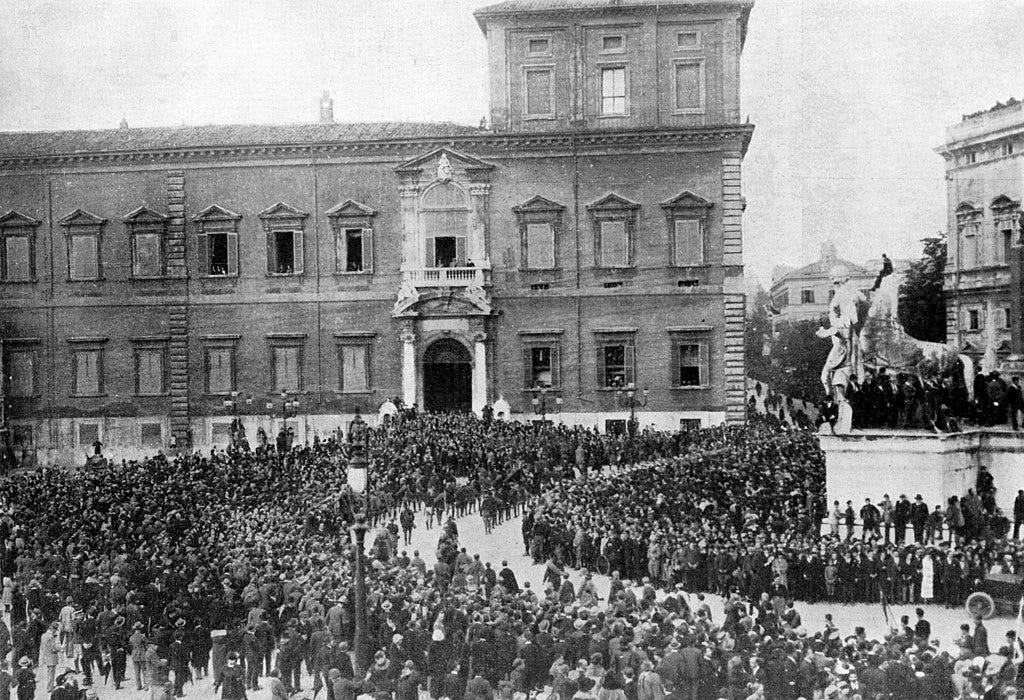
In terms of outlook, capital-“F” Fascism positioned itself as a “third way” in opposition to both liberal democratic capitalism and international communism. It broke with the latter by being overtly nationalist instead of internationalist and sought a peaceful resolution of class conflict in which the workers would be represented in trade unions, typically called “syndicates.”
Thus, capital-“F” Fascism was self-described as “Italian nationalist syndicalism with the philosophy of Actualism.” (This last part was a nod to Giovanni Gentile’s neo-Hegelian philosophy.)
Needless to say, the Comintern was not amused.
Mussolini's success brought the subject of fascism sharply to the attention of the Communist International, which had previously given it little consideration. An Italian Commission was set up at the Comintern's Fourth Congress in November-December 1922, and its resolution referred to the fascists as “the most radical wing” of the bourgeoisie. But the old Italian Socialist party was blamed most for Mussolini's victory. “The real forerunner of fascism was reformism,” the resolution declared. “The treachery of the reformists is primarily responsible for the great sufferings of the Italian proletariat.” (Draper 1969)
As far as the Comintern was concerned, Mussolini was an apostate — like someone who grew up a Christian or a Muslim and then became an atheist or a Buddhist later in life. Like religious fundamentalists who blame watered-down forms of their religion when their children leave their faith, the Comintern blamed moderate forms of socialism — the “reformists” — as leading to this apostasy.
Small-“F” “Fascists”
A year after Mussolini’s successful March on Rome, the KPD staged the German October, an unsuccessful communist uprising in 1923. The KPD sought the help of elements of the SPD, but the SPD did not give such help, and much of the uprising was aborted. In response to what uprisings did occur, the SPD-led government responded with force. Dozens of people were killed.
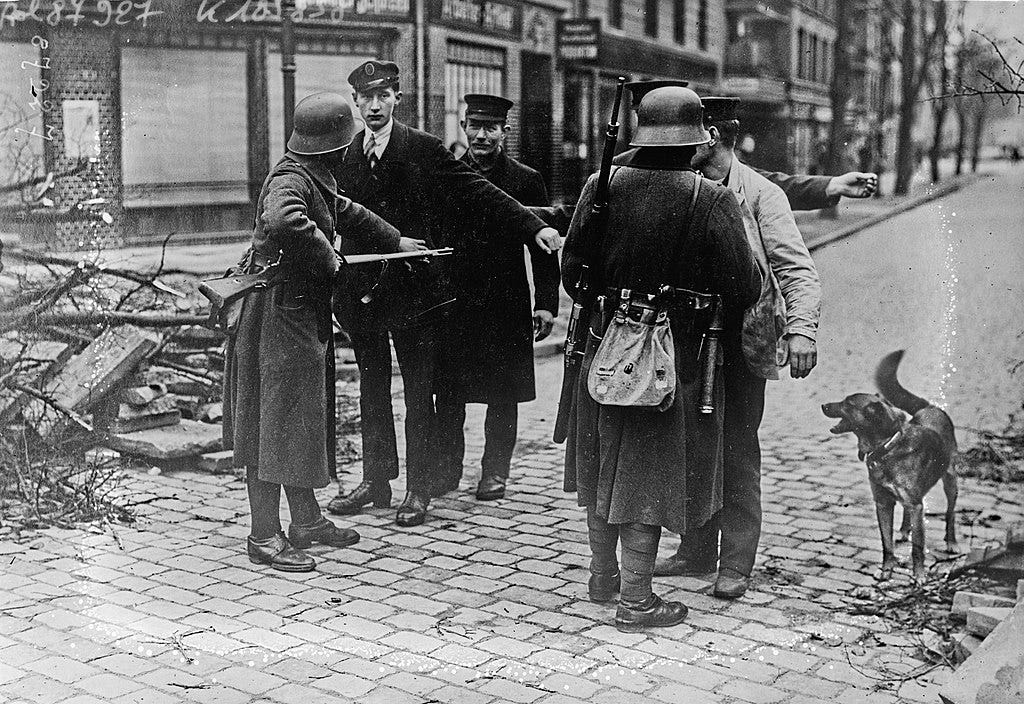
Grigory Zinoviev, Chairman of the Comintern, deployed the f- word in 1924:
The leading strata of the German Social Democrats are at the present moment nothing else than a fraction of German fascists under a socialist mask . . . It is not just now that the German social democrats have passed over to the side of capitalism. At the bottom, they have always been the class enemies of the proletariat.1
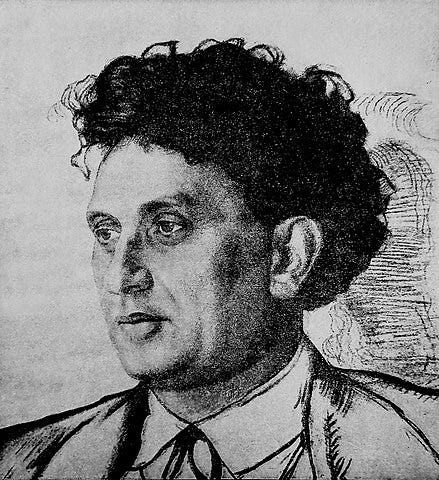
Josef Stalin, General Secretary of the Communist Party of the Soviet Union, added to Zinoviev’s assessment:
Fascism is a fighting organisation of the bourgeoisie dependent upon the active support of Social Democracy. Objectively, Social Democracy is a moderate wing of fascism. They are not poles apart, but immediate neighbours.2
Previously, the KPD and the SPD tried to work together to form a “united front” of socialism in Germany. After the events of the German October, the SPD would be called “social fascists” instead of “social democrats” by the Comintern and the KPD.
The first to put the words “social” and “fascism” together in that order was apparently Heinz Neumann, one of Stalin's early German protégés. In the Comintern's German organ, dated October 7, 1924, Neumann contributed an article subtitled “The Newest Form of Social Fascism in Germany.” (Draper 1969)
This is the origin of “fascist” with a small “f” as a slur.
Once demagoguery starts, it tends to keep spreading. Zinoviev called lots of moderate socialists “fascists.”
What are Pilsudski and the others? Fascist Social-Democrats. Were they this ten years ago? No. It goes without saying that they were already then fascists in nuce. But they have become fascists precisely because we are living in the epoch of revolution. What is Italian Social-Democracy? It is a wing of the fascists; Turati is a fascist Social-Democrat. Could this statement have been made five years ago? No. Think of a group of academicians who gradually developed into a bourgeois force. Italian Social-Democracy is now a fascist Social-Democracy. Take Turati, D'Aragona, or the present Bulgarian government Socialists. They were opportunists, but could one say ten years ago that they were fascist Social-Democrats? No, that would have been stupid then. Now they are that.3
Who is that over there? “Fascist!” How about this guy? “Fascist!” Have you met— “Fascist!” It turns out there were “fascists” suddenly everywhere in 1924.
Józef Piłsudski was the Polish armed forces commander and head of state in Poland when the Polish Socialist Party was in power. Augusto Turati and Ludovico D’Aragona were Italian socialist politicians. Turati would convert to Fascism with a capital “F,” and D’Aragona would not, instead fleeing to Paris. “Bulgarian government Socialists” was conveniently not specific.
The word “fascist” was quickly becoming a blanket term for anyone who was a political enemy of the Comintern. It seemed especially useful for the demagoguery of other socialists. Still, Zinoviev also applied it to Ramsay MacDonald, Prime Minister of the United Kingdom, and Hans von Seeckt, Commander-in-Chief of the German Army.
By applying it to figures as far apart as General von Seeckt, Marshal Pilsudski, Turati, and Ramsay MacDonald, Zinoviev made social-fascism into little more than a catch-all for Communism's enemies and opponents from moderate Left to far Right. (Draper 1969)
Zinoviev’s successor as leader of Comintern was Nikolai Bukharin, who tried to back away from demagoguery of the SPD as “fascist” a little.
The bourgeoisie resorts either to the method of fascism or to the method of coalition with Social Democracy according to the changes in the political situation; while Social Democracy itself often plays a fascist role in periods when the situation is critical for capitalism. In the process of development Social Democracy reveals fascist tendencies which, however, does not prevent it, in other political situations, from acting . . . against the bourgeois government in the capacity of an opposition party.4
Thus, Bukharin’s interpretation was that the SPD could be “fascist” bad guys or “against the bourgeois government” good guys, depending on the situation.
“Class against Class”
Still, the Ninth Plenum of the Comintern in February 1928 adopted a “class against class” policy that declared there were two only classes — the proletariat and the bourgeoisie — and they were in exclusive conflict. You can either be with us or against us.
Communists could no longer support moderate parties. However, this was mainly to the detriment of communist parties like the KPD because they weren’t that popular.
In 1929, the British Communist party claimed no more than 4,000 members against over 3,000,000 for the Labour party. Some British Communist leaders were understandably reluctant to cut themselves off from the Labour party and to pretend that they, not the Labourites, represented the British working class. …
Even in Germany, which had the largest and strongest Communist party outside Russia, “class against class” meant that the Communists consigned to an enemy class the organizations which contained the vast majority of workers. In 1930, for example, the German Communist party reported a membership of 135,808; the German Social-Democratic party, 1,021,777.
The Communist trade-union opposition claimed a following of 136,000. But the “free trade unions,” associated with the Social-Democratic party, contained 4,716,569 members; the so-called salaried employees (angestellten) unions, 1,620,970; the Christian (Catholic) trade unions, 778,863; and another group (Deutsche Gewerkvereine), 163,302.
The Communist vote was about half that of the Social-Democrats—4,592,100 to 8,577,700. Even at the Communist high point and Social-Democratic low point in November 1932, the latter's vote was still considerably larger—7,248,000 to 5,980,200. Many more workers, of course, voted for the Catholic Center and other parties.
The theory of social-fascism, then, put by far the largest number of organized workers into quasi-fascist parties which were so far gone that, for the Communists, there was only one thing to do—destroy them. (Draper 1969)
The conflict between the KPD and SPD worsened after the Blutmai (Bloody May) incident in May 1929. In response to increasing tensions, the police chief of Berlin banned all public gatherings on International Workers’ Day. The KPD went ahead with gatherings anyway, leading to an immediate crackdown by police that led to days of violence. Again, dozens were killed.
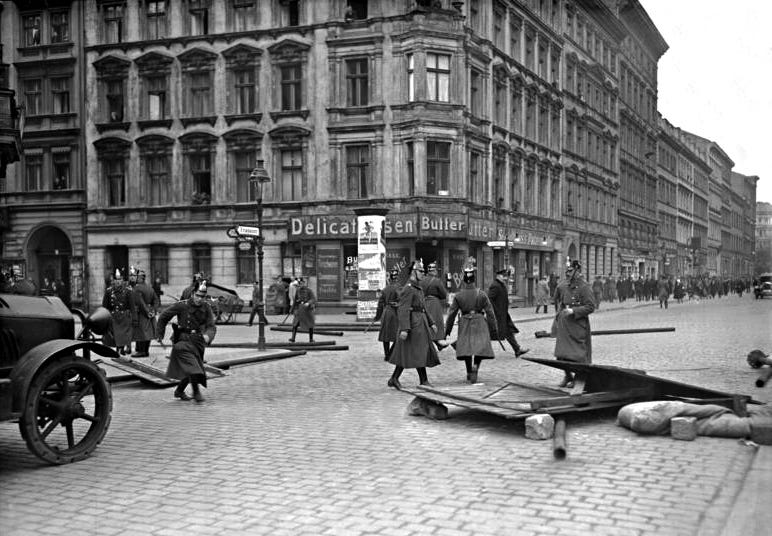
Hitler Not the Main Threat?
During this period in which the KPD was fighting the SPD, Hitler and the NSDAP were active. However, according to Comintern, the NSDAP wasn’t the real threat. The SPD was.
It would, however, be incorrect to conclude from this, that Germany is directly faced with the establishment of a fascist government a la Mussolini. Even fascist methods are subject to the changes of time and circumstances, i.e., to the development of capitalism, and are adapted to the economic and political situation of the country in question. The great change that has taken place is the growth of fascism within social-democracy, and in German social-democracy particularly the German capitalists have found a strong support with increasingly definite fascist tendencies.5
In March 1930, the SPD lost control of the German government to the (Catholic) Center Party under Heinrich Brüning. The Brüning government lasted until June 1932.
The Reichstag elections in July of [1932] gave the Nazis 230 seats, a gain of 123, and doubled their popular vote. The Social-Democrats went down to 133 seats, a loss of ten. The Communists gained twelve, from 77 to 89. Without the Nazis or Communists, a majority government had become impossible, and neither could or would take part. Brüning had already given way to [Franz] von Papen who was willing to take in Hitler as vice-chancellor, and Hitler would not settle for anything less than total power. (Draper 1969)
The Comintern made some preliminary admissions that it had made a mistake in concentrating its animosity almost exclusively against the SPD and not the NSDAP. Still, it continued to insist that the SPD was the main enemy.
At this juncture, in September of that cursed year, the Twelfth Plenum met in Moscow. According to the Comintern's spokesman, Kuusinen, the “revolutionary upsurge” had moved on to an even higher stage. The only united front was the “united front from below” which he defined as one between the “Communist vanguard” and the non-revolutionary masses for the purpose of isolating the Social-Democratic “agents of the bourgeoisie.”
He admitted that “for a long time, the Communist party of Germany underrated the National Socialist movement; and in part neglected to struggle against it.” But social-democracy was still “the main social support of the bourgeoisie” and “we ought to direct our main offensive against social-democracy.” The only concession he would make was that this offensive should be waged “in such a way that we may win over the Social-Democratic workers.”
In his concluding remarks, four months before Hitler took power, he reiterated: “The main blow, as I have already stated in my report, must in the present period of preparing for the revolution be directed against social-fascism and the reformist trade-union bureaucracy.” (Draper 1969)
Even with the SPD out of power, the KPD continued to insist that the SPD was a more significant threat than the NSDAP as late as December 1932.
The decline of the Social-Democratic party in no way reduces its role as the main social buttress of the bourgeoisie, but on the contrary, precisely because the Hitler party is at present losing followers from the ranks of the workers, instead of penetrating still more deeply into the proletariat, the importance of the Social-Democratic party for the fascist policy of finance capital increases.6
Franz von Papen would quickly be brushed aside, and the government would be taken over by the NSDAP. Hitler was appointed Reichskanzler on January 30, 1933.
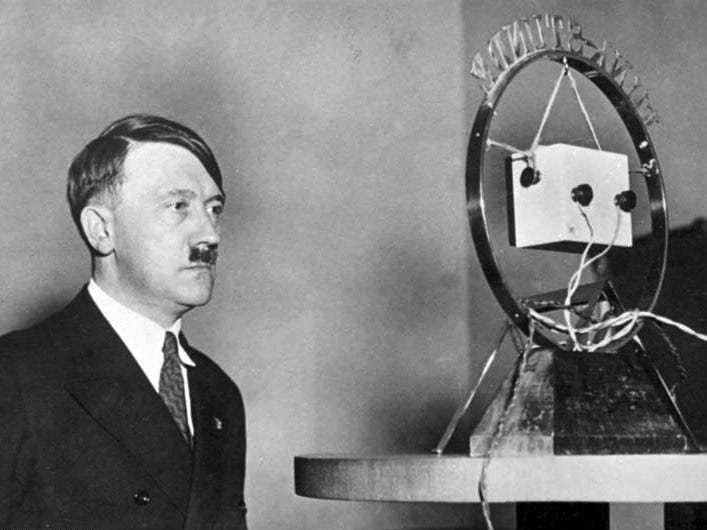
Thus, the “fascist” slur was not used to prevent the rise of Hitler. It was used by communists who were so hostile to a more moderate workers’ party that they concentrated their hostility toward the moderates instead of the literal Nazis.
The outcome of the German Communist’s adoption of the theory of social fascism was catastrophic for the party, as well as the German working class. The increased hostilities between the Social Democrats and Communists enabled the rise of Hitler’s National Socialists. The Nazis made no distinction between the Social Democrats, Communists, and trade unionists when they rounded them up and placed them in concentration camps. The point here is not merely that the KPD failed to assess the dangers of fascism during the Weimar Republic, but rather that the KPD had no intention of creating a theory that reflected the reality of the Weimar period. The theory of social fascism had very little, if anything, to do with fascism. (Haro 2011)
Conclusion
It will be seen that, as used, the word ‘Fascism’ is almost entirely meaningless. In conversation, of course, it is used even more wildly than in print. I have heard it applied to farmers, shopkeepers, Social Credit, corporal punishment, fox-hunting, bull-fighting, the 1922 Committee, the 1941 Committee, Kipling, Gandhi, Chiang Kai-Shek, homosexuality, Priestley's broadcasts, Youth Hostels, astrology, women, dogs and I do not know what else. …
But Fascism is also a political and economic system. Why, then, cannot we have a clear and generally accepted definition of it? Alas! we shall not get one — not yet, anyway. To say why would take too long, but basically it is because it is impossible to define Fascism satisfactorily without making admissions which neither the Fascists themselves, nor the Conservatives, nor Socialists of any colour, are willing to make. All one can do for the moment is to use the word with a certain amount of circumspection and not, as is usually done, degrade it to the level of a swearword.7
Far be it for me to contradict George Orwell writing in 1944, but from my perspective, writing now in 2025, I think we should abandon the use of the word “fascist” entirely.
Over the past eighty years, “fascist” hasn’t been “degraded” to a swear word. A hundred years ago, when the use of “fascist” was first started, it was already used as a swear word.
However, we should abandon the word “fascist” not just because its use associates us with 1920s communism. If you think this article is just an anti-communist screed, take a look at the references to this article.
Thomas Draper was a communist and renowned historian of communism. Even in his old age, he left the Hoover Institution because it was too “conservative.”
The full title of the journal Critique is “Critique: Journal of Socialist Theory.” It was founded as “Critique: Journal of Marxist Theory and Soviet Studies,” but the title was changed after the end of the Soviet Union.
Maybe you are a college student with a Che Guevara t-shirt and a hammer-and-sickle sticker on your MacBook, so you are inclined to like the association with communism that the use of the “fascist” slur brings you. However, when you use the “fascist” slur, you do not just associate yourself with communists; you associate yourself with the stupidest kind of communists that other communists criticize as a stain on the history of communism.
We should abandon the word “fascist” because it is now and has always been used for demagoguery. The word “fascist” is too flawed to be useful for serious analysis. It is the adult equivalent of calling someone “poopy pants.”
As soon as someone uses the word “fascist,” I stop paying attention. It is a sign of a flawed intellect, a lack of self-awareness, and a lack of substance. There are many better criticisms that anyone can make about any political figure. I welcome those criticisms, and I reject childish name-calling.
References
Draper, T. (1969, February 1). The Ghost of Social-Fascism. Commentary Magazine. https://www.commentary.org/articles/theodore-draper/the-ghost-of-social-fascism/
Haro, L. (2011). Entering a Theoretical Void: The Theory of Social Fascism and Stalinism in the German Communist Party. Critique, 39(4), 563–582. https://doi.org/10.1080/03017605.2011.621248
G. Zinoviev, ‘Lessons of the German Event,’ International Press Correspondence, 4:14 (1924), p. 110.
J. Stalin, ‘On the International Situation,’ International Press Correspondence, 4:72 (1924), p. 792.
Die Lehren der deutschen Ereignisse (Verlag Carl Hoym Nachf., 1924), pp. 69-70.
N. Bucharin, ‘The Programme of the Communist International. Adopted by the VI World Congress on September 1, 1928, in Moscow’, International Press Correspondence, 8:92 (1928), p. 1754.
“Social-Fascism in Germany,” The Communist International, May 1929, pp. 529-30.
International Press Correspondence, November 17, 1932, p. 1100.
G. Orwell, ‘What is Fascism?’, Tribune, 1944.
